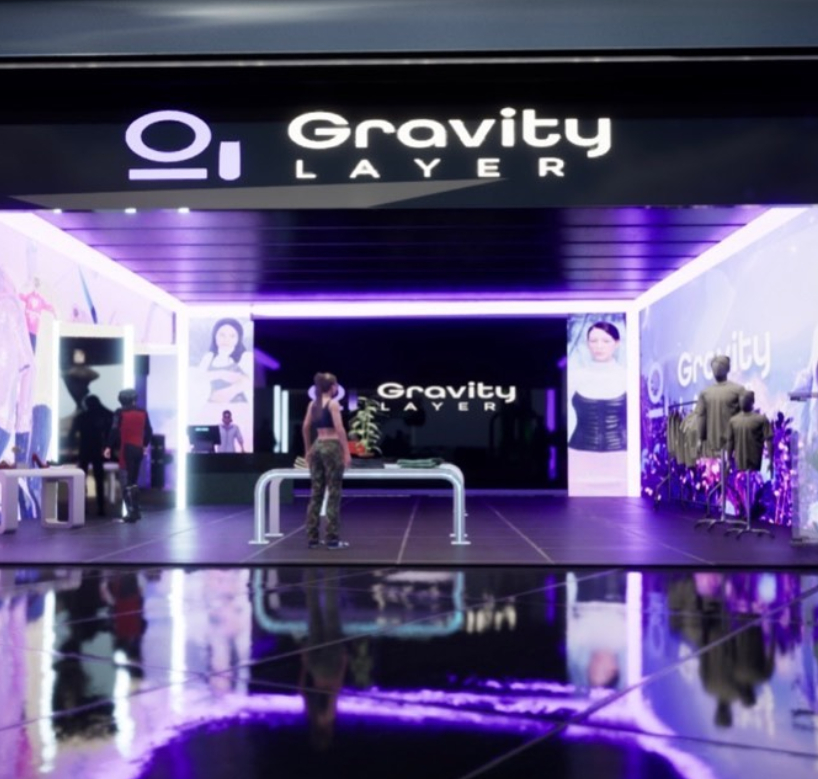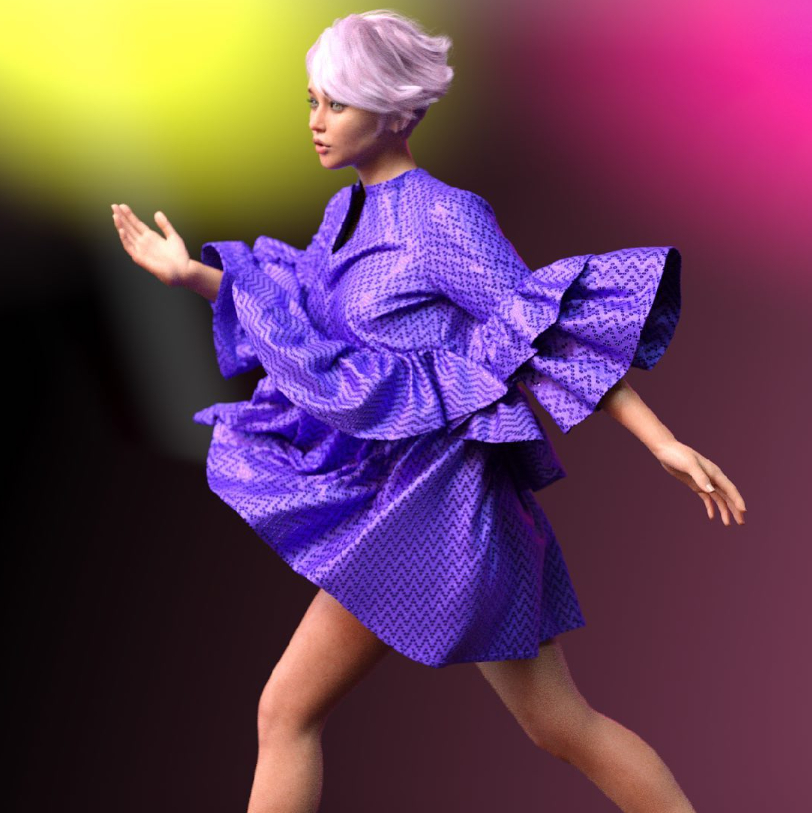Bouncing between meta worlds, I always wondered how I could bring my digital outfits along with me. Sometimes I’m not quite ready to sacrifice my purple blocky two piece on Sandbox for my smooth, black crop top when it’s time to hit Decentraland.
Gravity Layer, a collective focused on universal game skins, seems to have solved this rather trifling problem of mine.
“We’ve developed code which we provide to metaverses, telling their character customisers how to talk to our API - our core blockchain programme, if you will,” says Gravity Layer CEO Emily Shahaj. “This links all these worlds together by making it so they speak the same language.”
Now, you can move your digital wardrobe between metaverses. This pretty much nails the utility aspect of digital fashion I have been yearning for.
I purchase a meta fashion NFT (within the Gravity Layer universe) but instead of only wearing it in one online space, I have the opportunity to show it off to my web3 crew in other virtual arenas.
“When the metaverse encounters a user who holds one of the NFTs in our ecosystem, it knows how to give the user the right item,” Emily says. “So when the owner is in Sandbox, it looks like it belongs in Sandbox, but when they move to the Somnium Space for instance, the same NFT asset looks like it belongs there too.”
“The NFT basically acts as a key to unlock the correct compatible version of that garment to wear in that metaverse. One NFT design is therefore tied to several different 3D files made to be compatible for different metaverses.”
[Mind-blown emoji times a million]
Laying the foundation

Whilst completing her Master’s degree in Fashion, Emily became fascinated with the third dimension and the possibilities it would unlock for self-expressionism.
“Like most startups, it’s been a wild journey,” she says. “We started out by designing NFT fashion to digitally dress Instagram photos but we quickly realised there was a lot more we wanted these designs to be able to do. But, the technology needed to do this didn’t exist yet.”
This obstacle didn’t halt Emily from moving forward however, and she soon found a workaround. “We began developing the solutions ourselves but it got so intensive that we decided to open up the tech to all fashion creators as its own product. Now, that software is our full focus.”
Gravitating towards web3 and all its technicalities

Blockchain technology has been pivotal for Gravity Layer’s success in creating a digital fashion hub that hosts transferable NFTs between metaverses. It offers a true sense of ownership of assets across platforms.
“Our technology reads which NFTs in your wallet are compatible with our system. But, we ourselves don’t hold that information in any central place. Users can see the whole collection of Gravity Layer wearables they hold within their backpacks in any of our compatible metaverses,” Emily says.
Trailblazing a path is never smooth, especially in a space that is constantly developing and evolving as rapidly as web3 is. But that hasn’t dampened Gravity Layer’s eagerness to innovate within the space.
“It’s technically difficult what we’re doing. Nobody has done it before. There aren’t avatar standards for us to build on (we’re inventing those ourselves) and the blockchain is a rather nascent form of computing. The intersection of fashion and gaming is a totally new field. It’s a huge, exciting opportunity but we’re definitely learning on the fly.”
Although the concept of web3 is still fairly new to the majority of fashion consumers, there is a significant amount of talented individuals who are creating some of the most exquisite and imaginative digital garments I have ever seen.
For Gravity Layer, it is about enabling these individuals to take their designs a step further and allow them to be worn within different meta realms as opposed to just sitting pretty on an animated turntable.
“We see these incredible digital fashion designs with little-to-no ability for them to be worn anywhere,” Emily says. “We exist to make these designs seamlessly wearable everywhere and thus more valuable in all these in-game marketplaces. It’s truly game-changing for the digital fashion space and validating for the creators who dedicate themselves to the field.”

Gravity Layer is notably embodying a core aspect of web3 which is community collaboration when building projects. They are all for digital fashion designers reaching out and connecting with them so as to give them an opportunity to extend the capabilities of their digital designs.
“We aim to enable a universal wardrobe. Much like your physical wardrobe, you can wear it wherever you go online,” Emily says. “In the process, we’re empowering small creators and giving them a presence in these huge in-game marketplaces selling wearables.”
There's no doubt that Gravity Layer’s vision of a universal meta closet has an incredible gravitational pull. Their rationale is based on this concept of “gravity pulling worlds together”, with the ‘layer’ part “relating to the tech as an overlay on these platforms,” Emily says.
In that case, lay it on me. Lay it on me thick.
**
Connect with Gravity Layer on Twitter here, Instagram here and Discord here.**